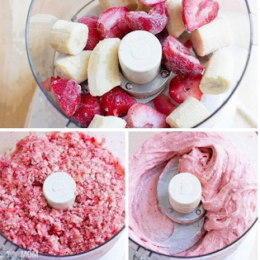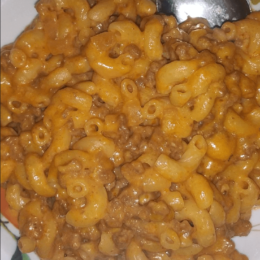This classic dessert is a creamy and dreamy delight. With layers of vanilla wafers, sweet bananas, and a rich pudding mixture, it’s no wonder this banana pudding is considered the best!
Ingredients:
Ingredient Quantity
Vanilla Wafers 2 boxes
Bananas, sliced 6-8
Milk 2 cups
French Vanilla pudding mix 1 (5 oz) box
Cream cheese, softened 1 (8 oz) package
Sweetened condensed milk 1 (14 oz) can
Frozen whipped topping, thawed 1 (12 oz) container
Instructions:
Prepare the Pudding Mixture:
Combine milk and pudding mix in a large bowl. Whisk for 2 minutes until smooth and thickened.
Refrigerate until set.
Cream Cheese Layer:
Beat softened cream cheese until smooth.
Gradually add sweetened condensed milk and mix until combined.
Combine Pudding and Cream Cheese Mixture:
Gently fold set pudding mixture into cream cheese mixture.
Fold in whipped topping until light and fluffy.
Assemble the Banana Pudding:
Layer vanilla wafers in a serving dish.
Top with sliced bananas.
Spread a layer of pudding mixture over bananas and wafers.
Repeat layers, ending with a pudding layer.
Chill and Serve:
Refrigerate for at least 4 hours or overnight.
Garnish with whipped topping, banana slices, or crushed wafers if desired.
Serve chilled.
Would you want to follow Tips for the Home more often?
Put this recipe on paper.
People sometimes find themselves perplexed by the mysterious codes that are displayed on food packaging. A food product’s expiry date should serve as a guide as to when it is at its best and when it might be harmful to eat. Unfortunately, consumers may end up wasting food or getting sick from misunderstood expiration dates due to the confusing array of terminology and poor labeling methods. Knowing the meaning and importance of expiry dates is crucial for making educated choices in the kitchen, since they are a vital part of food safety and quality.
Complicating matters further, expiry dates are not always defined or governed by law, thus various firms may use different terminology and dated methods. There are a lot of subtleties and complexity in the topic that need to be carefully considered. This article will dispel some of the myths surrounding food expiry dates by explaining what they are, where they came from, and how you may put them to use. Our hope is that by bringing more attention to this issue, we can equip shoppers with the information they need to feel more comfortable navigating supermarkets and home kitchens.
PAID LISTING
The Mysteries Behind Food’s Use-By Dates
The use of various terminology with potentially conflicting meanings and the absence of standardization in labeling standards contribute to the misunderstanding of food expiry dates. Various labels may include different dates, such as “use by” or “sell by,” which have different meanings; some may even include a “best if used by” date. To add insult to injury, many products’ expiry dates are based on quality standards rather than safety regulations, which may lead to more confusion. Worst case scenario: consumers throw out perfectly good food because they don’t know whether it’s still safe to eat after its expiry date has gone.
The Evolution of Perishable Food Dates
Food expiry dates have been around since the turn of the twentieth century, when producers started using open dating to tell consumers how fresh and high-quality their items were. In the 1970s, the practice became more popular in the US due to the efforts of consumer advocacy organizations that demanded higher standards of food safety and more openness. But since there was no federal oversight, different states’ laws and voluntary standards ended up mixed together, leading to inconsistent and sometimes contradictory practices. Inconsistencies in the food industry’s attempts to standardize expiry date labeling have persisted throughout time.
When comparing Best if Used By/Before, Use By, and Sell By, there is a notable distinction.
To get the most out of the product’s taste, texture, or general quality, look for the “Best if used by/before” date. This is not a spoilage date; beyond this date, the item might still be edible, although its quality could be worse.
“Use by” indicates the final suggested date for the product to be used while it is still in its best condition. Things that might spoil soon are common candidates for this method. This date, in contrast to “best if used by,” might affect food safety.
For the purpose of inventory management, merchants use the “sell by” date. After this date, it doesn’t n



